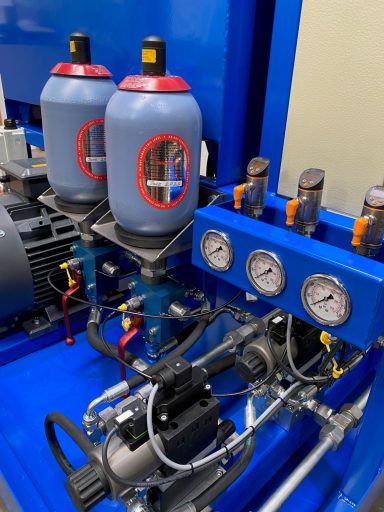MNE Hydraulic System Design
Designing a hydraulic system involves careful planning and consideration of various components to create a system that meets specific performance requirements of our customers and safety standards.
Here are the key steps and factors MNE consider when we are designing a hydraulic system:
Define System Requirements:
- Determine the purpose of the hydraulic system. What tasks or functions does it need to perform?
- Establish performance requirements, including pressure, flow rate, and temperature conditions.
- Consider safety and environmental regulations that apply to your industry.
Select Fluid:
- Choose the hydraulic fluid (hydraulic oil) that suits your application and operating conditions. Factors to consider include viscosity, temperature range, and compatibility with system components.
Component Selection:
- Select hydraulic components such as pumps, valves, actuators (cylinders or motors), reservoirs, filters, hoses, and fittings. Ensure they are compatible with your fluid choice and meet your performance requirements.
- Consider the type of valves needed for control (directional control valves, pressure relief valves, etc.).
System Layout and Sizing:
- Design the layout of the hydraulic system, considering the physical space, accessibility, and safety.
- Calculate the necessary sizes for components based on flow rates, pressure requirements, and load specifications.
- Determine the optimal placement of components for efficient operation.
Fluid Filtration:
- Include filtration systems to remove contaminants from the hydraulic fluid, preventing damage to sensitive components.
- Specify the type and micron rating of filters based on system requirements.
Safety Measures:
- Incorporate safety features such as pressure relief valves, emergency stop controls, and protective enclosures to ensure safe operation.
Sealing and Leak Prevention:
- Choose appropriate seals and gaskets to prevent leaks. Consider the type of seals required for specific components like cylinders and pumps.
Heat Management:
- Implement cooling systems, if necessary, to manage heat generated during operation, which can affect fluid viscosity and component longevity.
Control System:
- Design the control system, which may involve selecting hydraulic control valves and electronic or manual controls.
- Consider automation options for precise control and monitoring.
Testing and Prototyping:
- Before finalizing the design, create a prototype or conduct simulations to ensure the system meets performance requirements and functions as intended.
Documentation:
- Create detailed schematics, drawings, and documentation of the hydraulic system design for reference, maintenance, and troubleshooting.
Installation and Maintenance:
- Follow industry best practices during installation, including proper torque settings, fluid flushing, and testing.
- Establish a maintenance schedule to regularly inspect, service, and replace components as needed.
Training:
- Ensure that personnel operating and maintaining the hydraulic system receive proper training and safety instructions.
Compliance and Standards:
- Ensure that the hydraulic system design complies with industry standards, safety regulations, and environmental requirements.
Performance Monitoring:
- Implement monitoring systems to track system performance and detect issues early.
Gallery
Examples of some of our systems
IN HOUSE DESIGN
HPU'S UP TO 200KW
CAD DESIGN
PROJECT MANAGEMENT
CUSTOM DESIGN
PRODUCTION VOLUMES
©Copyright. All rights reserved.
We need your consent to load the translations
We use a third-party service to translate the website content that may collect data about your activity. Please review the details in the privacy policy and accept the service to view the translations.




